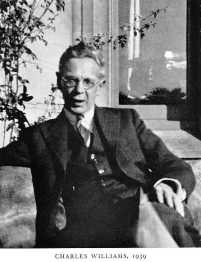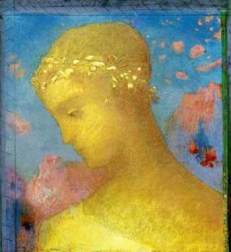I wrote the following for The Englewood Review of Books in February.
Charles Williams: The Third Inkling Grevel Lindop OUP, pp. 493, ISBN: 9780199284153
Alice Mary (Smyth) Hadfield penned the earliest work about Charles Williams’ life. Because she had replaced Phyllis Jones as the librarian at the London branch of the Oxford University Press where Williams worked nearly his entire career, Alice was a beneficial source of information, but she was, arguably, too close to Williams to ever write a true biography. For some time this was all we had. Secondary literature, on the other hand, seemed ignorant of the facts that would begin to trickle out over the next decade. The introduction to Thomas Howard’s The Novels of Charles Williams (1983), for example, can confidently proclaim, “Charles Williams was not interested in the occult at all except during a brief period in his early life. One might be pardoned for forming the impression from his novels that he was quite caught up in the occult, but that would be a mistake.” We now know this to be false. Lindrop seconds previous research into this area. Williams was heavily involved in Jewish Kabbalism filtered through the modified Rosicrucian philosophy of A.E. Waite. There is also a hint that his parallel membership in the Lee-Nicholson group probably was not a casual preoccupation.
The same goes for his relationships. Details about his fantasy-romantic games were not initially revealed to the public. Enquirers were left with the understanding that he had an unusual appeal to a number of considerably younger women with whom he worked with or who attended his lectures; a phenomenon variously interpreted as everything from evidence of his holiness to a literal magical charm. Since the publication in 1989 of letters to one of his last interests, Lois Lange-Sims, we have learned more.
What we haven’t had is a complete story, weaving together the personal with the professional, poetic, dramatic, and theological strands of his life, which Grevel Lindop provides. Additionally, the author has added nine personal interviews conducted over a twenty-year period leading up to the publication of the book. The timeliness of the research cannot be underestimated, and the story is compelling. The biography both deepens an d contradicts previous accounts, leaving the reader with a paradoxical portrait of a unique literary figure. Williams influenced many other writers, and indirectly shaped a generation of readers through his work as a senior editor. He should probably be given credit, for instance, for the introduction of Sören Kierkegaard’s writings to an English audience.
d contradicts previous accounts, leaving the reader with a paradoxical portrait of a unique literary figure. Williams influenced many other writers, and indirectly shaped a generation of readers through his work as a senior editor. He should probably be given credit, for instance, for the introduction of Sören Kierkegaard’s writings to an English audience.
Lindop paints a detailed picture of William’s relative and continuing poverty which barred him from standard entrance into the world of academia in a class-bound society. The broken dreams of the working poor, together with Williams’ tenacity, create sympathy for him and hold the reader in the narrative when it threatens to become alienating. The author also does an admirable job of connecting William’s early experiences with his later life without becoming too intrusive with interpretations. For example, his poor eyesight combined with an intense imagination likely contributed, according to Lindop, to “… his lifelong sense that the world could at any moment dissolve into a magical realm of sinister unreality or heavenly illumination …” His father’s atheism and his association with a lively church-based discussion group in his teens are credited with providing the ground for his awareness of, and even sympathy for, pagan and secular perspectives.
These themes continue to be developed throughout the narrative. Of particular interest, especially in light of the church’s continuing dilemma in defining its relationship to sexuality and marriage, is his early fascination with Coventry Patmore (1823-1896). His writings were introduced to Charles by his enthusiastic friend and co-worker at Amen House, Fred Page. Williams later came to link Patmore’s hints about chastity, sexual
desire, and religion with Dante’s Vita Nuova and Milton’s Comus, to create his own vision of a world-accepting ‘Romantic Theology’. Set against the background of the cheap moralistic tracts aimed at the working class, the reader can’t help but sympathize with the revolt against the dour tendencies of the church of that age, but many will also feel that he didn’t display enough caution. As C.S. Lewis, in some of his earliest correspondence with an older Williams, summarizes, “…it all fits in perfectly and must seem to you almost like a trap…”
Charles Williams’ soaring, syneisaktistic ideas on this topic would play themselves out in the mundane reality of a publishing house in London. One of the hidden strengths of the book, I mention in passing, are the carefully chosen details about the physical places Williams inhabited. His relationship to Phyllis, the first and longest of his extramarital ‘affairs’, was unconsummated. They both, for different reason, enjoyed each other’s company and even when the fantasy seemed to falter due to time, distance, or circumstance, it would rekindle with much the same passion as it had in the beginning. Phyllis never disappears entirely from the story. In one sense, his love for her was a surprise to him, but rather than reject his feelings, he seems to have accepted th em as revelatory. This is understandable to an extent. Williams, and other mystics, would argue that the state of “Being in Love” is close to the experience of God. The true and painful oddity is not that he had an attractive and intelligent young girl who would play along, but that at some point he realized that a kind of sublimated sexuality released him to live and write creatively in a way that nothing else could. Hence, in her absence, he developed similar relationships with other women and, although there were periods of dormancy, this habit never entirely disappeared. Lindop sees this in terms of a growing addiction that increasingly agonized him as he saw what it was doing to himself and to others. He points to places in the novels and letters that expose this self-loathing, and retells his conversation with Lois where he admits of feeling incapable of having normal human relationships.
em as revelatory. This is understandable to an extent. Williams, and other mystics, would argue that the state of “Being in Love” is close to the experience of God. The true and painful oddity is not that he had an attractive and intelligent young girl who would play along, but that at some point he realized that a kind of sublimated sexuality released him to live and write creatively in a way that nothing else could. Hence, in her absence, he developed similar relationships with other women and, although there were periods of dormancy, this habit never entirely disappeared. Lindop sees this in terms of a growing addiction that increasingly agonized him as he saw what it was doing to himself and to others. He points to places in the novels and letters that expose this self-loathing, and retells his conversation with Lois where he admits of feeling incapable of having normal human relationships.
Charles Williams is considered a Christian writer. Many of his works provide an orthodox Anglo-Catholic perspective on a number of themes. Yet, they can be tantalizingly radical or, at times, even literal. The beautiful vision of a universe marked by fluid hierarchies, the broadening of divine providence into a co-inherence of all time and events, and the wrestling with pain and evil in unique ways, give the impression that he was straining to put into words truths just beyond his grasp. At his best, he is entirely believable, and even the most muddled parts can be useful for what they hint at. He was and continues to be an fascinating, if eccentric, lay theologian. The biography mentions all the important writings, but readers unfamiliar with Williams’ collected works will need to consult them to get a better sense of the theology.
While not discounting his importance as a Christian thinker, Lindop feels that Williams will, or should be, remembered mostly as a poet. He spends time tracing his belated development away from older, flowery forms after years of gushing praise from his early patrons. Sections of various chapters discuss his lifelong goal to publish his elaborate books of Arthurian poems and his influence on younger British poets, not all of who shared the same spiritual interests. Additionally, he makes a case that his most personal ideas are always encapsulated in verse.
It’s hard to imagine a figure as complex and interesting as Charles Williams not being rediscovered at some point, whether it is as a poet, theologian, or dramatist. Grevel Lindop has given us a valuable tool for doing that.
**********************************************************************
Grevel Lindop, a member of the Charles Williams Society and author of the new biography, speaking on the topic: Charles Williams: The Third Inkling, Who Was Charles Williams?.

Elucidating, thank you.
LikeLike